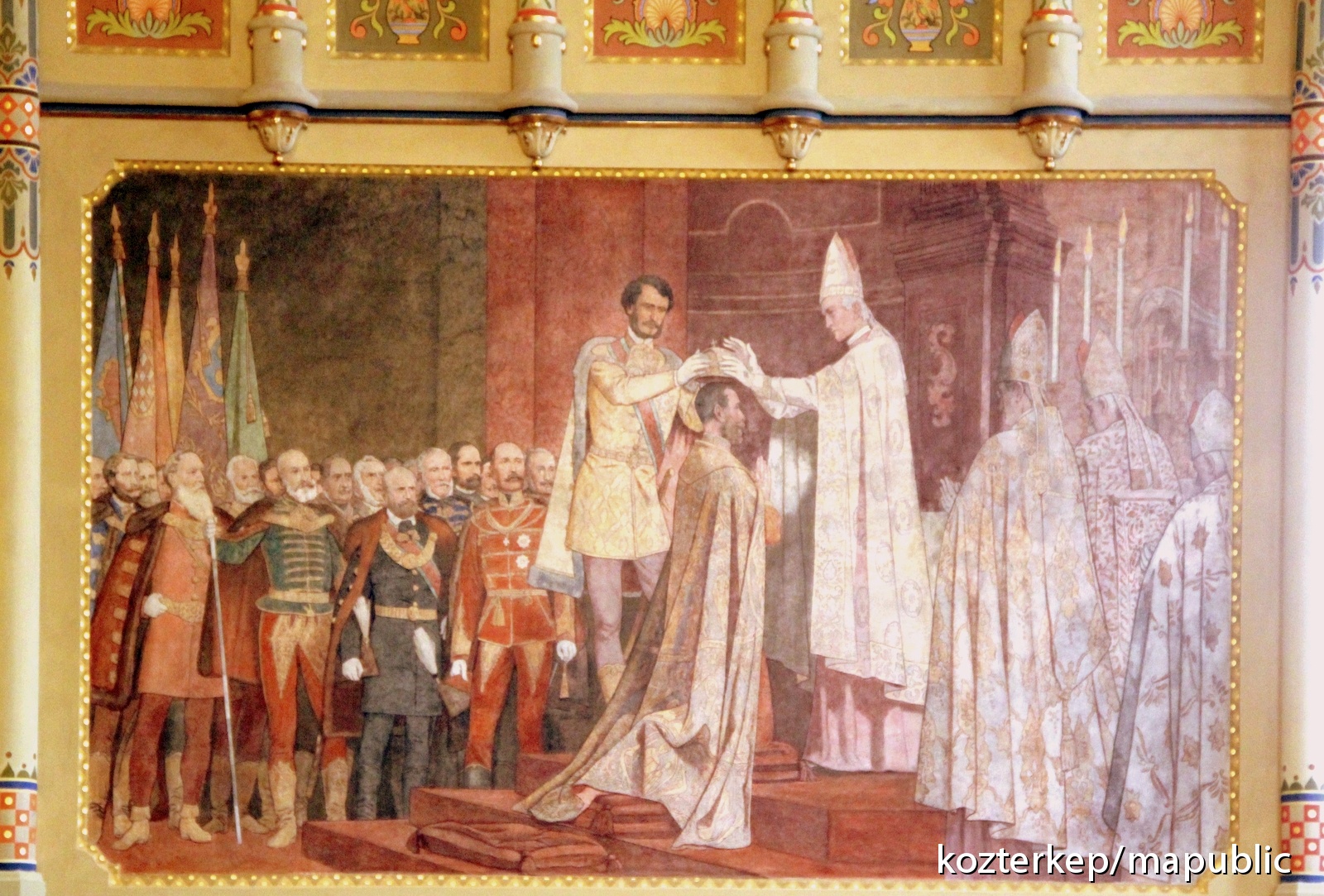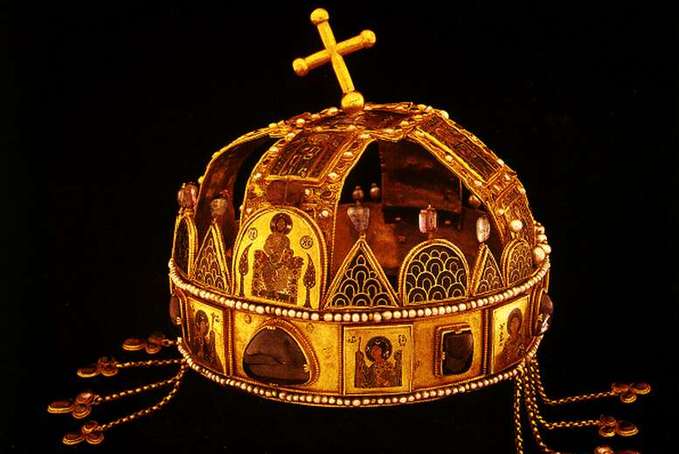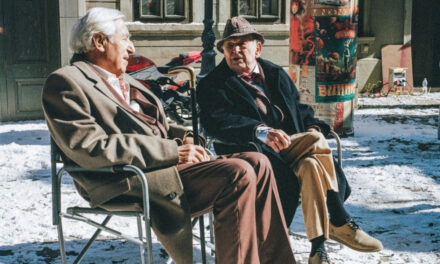Although Bethlen was elected king by the Hungarian orders, he was not crowned, even though the Holy Crown was still in his hands at that time.
During these tumultuous years of 1619-1622, the guardian of the Holy Crown, count Péter Révay , was constantly at the Holy Crown's side, following it everywhere, until only in 1622, after II. Ferdinand's agent, he did not die. The Holy Crown arriving in Bratislava was welcomed by the people with the greatest enthusiasm and the authorities received it with the greatest solemnity.
In 1644, György I. Rákóczi , the Holy Crown briefly left Bratislava again and was kept in Győr's castle protected by the Danube.
In 1683, the Holy Crown had to flee again, although the 1. tc. of 1659. he again forbids that it should not be taken out of the country, but the Turkish armies then marched against Vienna on the left bank of the Danube, where Bratislava is also located, and from there the Holy Crown must be saved first to Linz and then to Passau. After the liberation of Vienna and the triumphant repulse of the Turks, the Holy Crown was returned to Bratislava, where it remained until 1703, when it was taken back to Vienna, - was it really because the Bratislava castle was struck by lightning and the castle tower caught fire, or because II . Ferenc Rákóczi's freedom struggle? It returned to Bratislava and the Holy Crown remained there from 1712 until 1784, not counting the short time when it was kept in the strong castle of Komárom, located further from the border, during the War of the Austrian Succession.
One of the saddest periods in the history of our Holy Crown is the six years from April 13, 1784 to February 1790. until the 17th in the treasury of the imperial court in Vienna, II. Joseph's decree, stored among the crowns of Joseph's other countries. At that time, there were two very noble lords as the crown guards, one of them, Count Ferenc Balassa , despite his Hungarian name, was also a sworn enemy of the Hungarians, and they actually stole the sacred treasures. He brought it back in 1790 amid even greater rejoicings and in a veritable triumphal procession - one could say the entire nation. We cannot dwell here on the celebrations with which the nation welcomed the returning Holy Crown, here we can only note that the nobility of Croatia also participated in the general enthusiasm, which at that time still felt as one with the Hungarians and the ambassadors of the County of Zagreb in the Hungarian ceremonial dress held in the Hungarian national colors they took part in the parliament that received the Holy Crown.
The returning Holy Crown was taken to Buda, where it was put on public display for three days, and only then was it placed in the royal castle, where it has been kept ever since. "Long live Hungarian freedom", this cry of liberation was heard throughout the country when the Holy Crown returned home, and the best Hungarian poets of the time wrote poems to "our glorious crown", the "holy gift from the heavens", and in historiography, the history of the Holy Crown became a real literature.
During the Napoleonic Wars, the Holy Crown had to flee again and again: in 1805 from Buda to Mohács, then in 1809 to Eger and Gyöngyös.
During the War of Independence of 1848-49, when Kossuth and his government had to flee from the forces of Windischgrätz With considerable difficulty, they were taken by car over the barely completed Chain Bridge, the roadway of which was made of planks, to the Pest railway station, from there on a special train to Szolnok and then to Debrecen accompanied by the Crown Guard grenadiers.
After the Löker disaster - this is quite well known - Bertalan Szemere , the Minister of the Interior at the time, buried the chest containing the Holy Crown and the insignia with the help of three of his companions in the ground of a house abandoned by its inhabitants near Orsova - so that it would not fall into the hands of the emperors. But the Holy Crown was not in a good place here, so it was dug up again the next day, and buried again between two young willow trees on the road to Oláhórska, and now it was left there as well. Here, in the spring of 1853, the Holy Crown of the nation was found, which was protected by a separate case, undamaged, but the sword was very rusty, and Saint Stephen's cloak also suffered a lot in the wet ground of the willows. From there, an Austrian warship took him to Buda-Pest, where Archduke Albrecht , the emperor's governor and Cardinal-Primate János Scitovszky But here it was only exposed to the public for three days, and then it was taken to Vienna, because József Ferenc wanted to make sure that the real badges had been found. Primate Scitovszky himself transported the Holy Crown to Vienna by train, and from the window of the train car, he showed it to the people who flocked there at each station, and shared a blessing with it. In Vienna, the young emperor then took him to the court chapel, held a solemn Te Deum over him, and then sent him back to Buda.
In 1896, on the 1000th anniversary of Hungary's existence, our Holy Crown was again presented to the Hungarian people, who viewed the Holy Crown carried around the streets of Budapest in the court carriage with the appropriate, lasting reverence.

Bertalan Székely: Coronation of Ferenc József I as king in Buda, 1867 (Source: kozterkep)
Three days after the coronation on December 30, 1916, it was again exposed to the public in the Matthias church, and even then thousands of people made pilgrimages to view it.
From then on, the Holy Crown was kept in the Buda castle even in the midst of the nation's most severe trials. On the 900th anniversary of the death of King St. István, celebrated this year, the Hungarian people and friendly guests from abroad once again had the opportunity to view the Holy Crown with reverence for three days, and the Hungarian scientific world to study the Holy Crown in depth."
In 1918, when the Aster Revolution abolished the form of government of the kingdom and proclaimed the republic - which, in the light of the historical constitution, happened unconstitutionally by omitting the constitutional factors intended for this purpose - the XXXI of 1919. People's Law abolished the position of Crown Guard and made guarding the duty of the Prime Minister and the Minister of the Interior.
Although leaflets calling for the destruction of the crown were distributed already in 1918, after the proclamation of the republic, the crown was not attacked during the revolutions and the communist dictatorship.
During the revolutions of 1918–19, even under Károlyi's "People's Republic", the Crown Guard was disbanded and the Crown Guard institution was abolished.
The conditions of the time are well characterized by Count Gyula Ambrózy , crown guard:
"One of these days, I was approached by a medical student who, as he said, was so concerned about the fate of the crown that restlessness drove him to me. He presented a pamphlet entitled »What should happen to the Hungarian holy crown?«. In it, the writer concluded after the most incompetent tastelessness that the crown must be destroyed, so that the symbol of the kingdom would also be destroyed forever. My visitor offered to help me with some of his friends if I wanted to take the crown to a safer place. I thanked him very much for his patriotic offer, but to this day I don't know whether the person was really a fanatical fan of the crown, or Mihály Károlyi's hired figures who just wanted to trap him. After a few days, he appeared again and offered his services even more energetically. He kept his right hand in his jacket pocket the whole time we were talking, so I was prepared for him to pull out a dagger or a revolver at any moment. However, apart from mutual, careful observation of each other, nothing happened, he left and I haven't heard from him since.
I offered to Károlyi that I would ask Vix, the commander of the French occupying forces, to undertake the guarding of the royal castle, because in this way, under the protection of the international troops, the crown placed in the castle would also receive greater protection . Since Károlyi did not consider this offer of mine feasible either, there was nothing left but to request that arrangements be made for one of the reliable teams to be instructed to immediately rush to the aid of the guard in case of need. Károlyi promised that he would talk Sándor Festetich When we left, we met Sándor Festetich at the gate, from whom I inquired whether he had such a reliable team that we could definitely count on. He replied that as long as he was the Minister of War, a fighter regiment was completely reliable to him. I have therefore requested that you order this regiment, or a corresponding part of it, to hasten, if need be, primarily to the defense of the crown. "Of course, I will be very happy to take action, but of course they have to protect our person first!" was the Minister of War at the time, I don't know if his answer was thoughtless or confused! Count Apponyi and I looked at each other and continued on. According to this, the person of the Károlyi-type ministers also precedes the 1000-year-old Hungarian holy crown? I immediately wrote down this answer of the Minister of War, so that it would not be forgotten.
Around July 26th, Tibor Patay brought with him the 199th issue of the »Vossische Zeitung«, published in Berlin, dated July 21st. To our astonishment, we found a notice in it titled »Die Stefans Krone unter den Hammer«, according to which an antiquarian from Munich proves with an authentic document that he negotiated the auction of the Hungarian holy crown with Béla Kun and was also instructed to sell the crown for 100,000 francs. The smallness of the sum made it somewhat improbable at first, but later, thinking that a half-decent person could not buy a crown stolen from a country without committing obvious embezzlement, the news began to seem plausible, all the more so because the according to today's concepts, the stones on the crown are of little value, so the crown can only be sold as raw gold. "If I'm not mistaken, according to the 1867 estimate, it was only valued at HUF 30,000 together with raw gold."
Public perception saw the Holy Crown as a symbol of Hungarian statehood. This public belief may have been the greatest defender of the crown.
When, on March 22, 1920, a committee consisting Count Gyula Ambrózy Horthy , they found everything in order.
Author: Zsolt Zétényi












